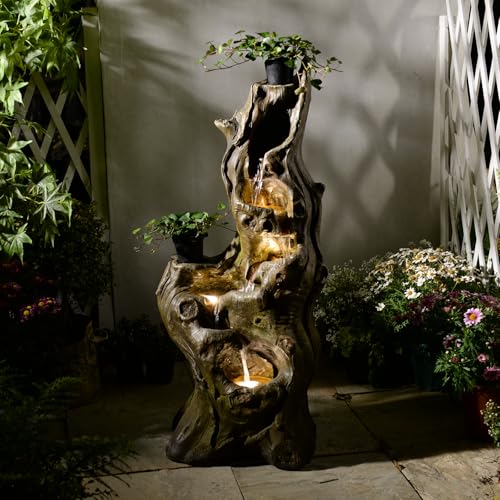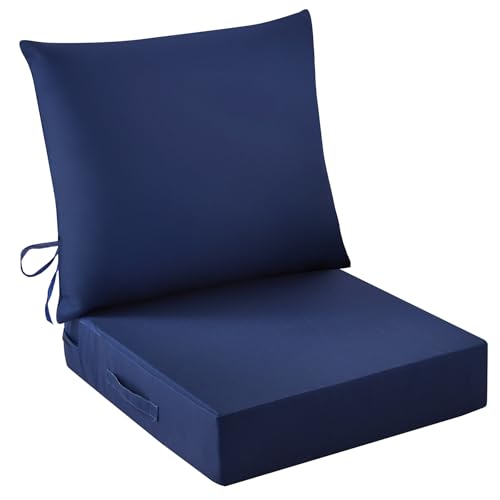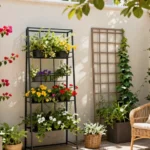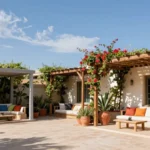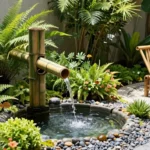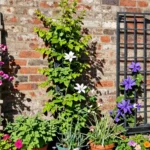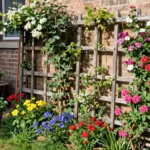Transform your backyard into a stunning outdoor sanctuary with the perfect blend of grass and pavers. We’ve discovered that combining these two elements creates the ideal balance between natural beauty and functional design that homeowners crave.
The strategic placement of pavers alongside lush grass doesn’t just enhance your property’s curb appeal—it revolutionizes how you experience your outdoor space. From elegant pathways that guide guests through your garden to sophisticated patio areas perfect for entertaining, this ever-changing duo offers endless possibilities for creating your dream backyard.
We’ll show you innovative design concepts that maximize both style and practicality, whether you’re working with a compact urban yard or sprawling suburban industry. These grass and paver combinations deliver low-maintenance answers that’ll keep your outdoor space looking pristine year-round while providing the perfect foundation for memorable gatherings and peaceful retreats.
Create Geometric Patterns With Alternating Grass and Paver Strips
Geometric patterns transform ordinary backyards into stunning visual masterpieces. We can achieve professional landscaping results by strategically alternating grass sections with paver strips to create defined, modern outdoor spaces.
Linear Strip Design for Modern Appeal
Linear arrangements create clean, contemporary lines that elongate your backyard space. We recommend installing paver strips in widths of 2 to 4 feet with matching grass sections between them for optimal proportion. This design works exceptionally well for narrow yards where we want to create the illusion of greater width.
Straight pathways made from concrete pavers or natural stone guide foot traffic while maintaining defined growing areas for turf. We can orient these strips perpendicular to your home’s foundation to draw the eye outward and make smaller spaces appear larger. Popular materials include bluestone, travertine, and permeable pavers that complement various architectural styles.
Maintenance becomes simplified when we separate hardscape and softscape elements into distinct zones. Each grass strip typically measures 3 to 6 feet wide, providing adequate space for healthy root development while keeping mowing manageable.
Checkerboard Pattern for Visual Interest
Checkerboard layouts combine equal sized squares of grass and pavers to create striking focal points. We typically design each square section between 4 to 8 feet to ensure proper scale for residential backyards. This pattern works best in open areas where we have enough space to appreciate the full geometric effect.
Installation requires precise measuring to maintain uniform square dimensions throughout the design. We start by establishing a grid system using string lines or spray paint to mark exact boundaries for each alternating section. Concrete pavers, brick, or decorative stone fill the hardscape squares while healthy turf occupies the remaining spaces.
Different grass varieties can enhance the checkerboard effect when we select contrasting textures or colors. Bermuda grass paired with darker pavers creates bold definition, while fine fescue offers a softer appearance against lighter stone materials.
Diagonal Strips for Ever-changing Movement
Diagonal installations introduce energy and movement to static backyard designs. We position strips at 45 degree angles to create visual flow that guides visitors through different areas of your outdoor space. This approach particularly benefits rectangular yards where we want to break up predictable sight lines.
Strip widths between 18 inches to 3 feet work effectively for diagonal patterns without overwhelming smaller properties. We can vary the spacing between strips to create rhythm and prevent monotonous repetition throughout the design. Wider grass sections accommodate furniture placement while narrower strips serve as decorative accents.
Curved transitions at strip endpoints soften harsh angles and create more natural integration with existing industry features. We often incorporate these diagonal elements around patios, fire pits, or outdoor kitchens to establish defined zones while maintaining visual connectivity across the entire backyard space.
Design Curved Pathways Through Natural Grass Areas
Moving beyond geometric patterns, we can create softer, more organic transitions in our backyard spaces. Curved pathways using pavers set within or alongside natural grass establish a gentle, inviting flow that makes outdoor areas feel more relaxed and spacious than rigid straight lines.
Serpentine Walkways for Organic Flow
Serpentine walkways encourage visual interest and natural movement throughout our garden spaces. We can achieve this design by placing natural stone or flagstone pavers in a meandering pattern with grass filling the gaps between each stone. This wavy layout avoids harsh angles while promoting a flow that complements our existing plant beds and garden features.
Grass pavers offer another excellent option for creating these organic pathways. These concrete or stone grids allow grass growth within their openings, providing both structure and natural beauty. We recommend spacing the pavers 18 to 24 inches apart to maintain comfortable walking distances while allowing adequate grass growth between sections.
Installation becomes straightforward when we follow the natural contours of our yard. Start by laying out the serpentine pattern with spray paint or rope, then excavate each paver location to ensure level placement. This approach creates a cohesive design that feels intentional rather than random.
Circular Stepping Stone Arrangements
Circular layouts of stepping stones add compelling focal points while functioning as small gathering or resting spots within our yards. We can arrange stones or pavers in concentric circles with grass filling the spaces between each element, creating beautiful texture contrast that softens hard edges.
This design integrates natural and built elements smoothly by balancing aesthetic appeal with practical function. Circular arrangements work exceptionally well around garden features like fire pits, fountains, or seating areas where we want to encourage people to pause and enjoy the space.
Material selection significantly impacts the overall effect of our circular designs. Natural flagstone creates rustic charm, while concrete pavers offer modern consistency. We suggest using stones between 12 to 18 inches in diameter for comfortable stepping, with grass sections of similar width to maintain visual balance.
Crescent-Shaped Paver Borders
Crescent shaped paver borders provide elegant framing for our garden beds, lawns, or patios. These curved edges create subtle but distinct separation between grass and other industry elements while improving curb appeal and simplifying maintenance tasks.
Utilizing pavers in crescent arcs makes lawn care easier by defining clear mowing lines and protecting plant beds from accidental damage. We can combine this hardscape approach with grass or ground covers within the crescent shape to blend the design seamlessly into our natural environment.
Planning the crescent curves requires careful consideration of our existing industry features. Measure the area we want to border, then create a gentle arc that complements nearby structures or plant beds. Installing these borders at a consistent depth of 2 to 3 inches ensures they won’t interfere with mowing while providing clear visual definition.
Build Defined Outdoor Living Spaces With Mixed Materials
Combining grass and pavers transforms ordinary backyards into sophisticated outdoor rooms with distinct zones for different activities. This mixed material approach balances the durability of hardscape elements with the natural beauty of lush greenery.
Paver Patios Surrounded by Grass Borders
We recommend installing paver patios with grass borders to create clean entertainment areas that blend seamlessly with your industry. The structured paver surface provides a stable foundation for outdoor furniture while the surrounding grass softens the hardscape’s edges visually. This design creates excellent contrast between the defined patio space and the organic grass perimeter.
Grass borders around paver patios enhance the overall backyard ambiance by providing a natural transition zone. The lush green frame draws attention to your seating area while maintaining visual flow throughout the space. Installing this combination requires careful planning of drainage and edge restraints to keep materials properly separated over time.
Sunken Seating Areas With Grass Perimeters
Sunken seating areas offer an intimate retreat feeling when surrounded by natural grass perimeters that define the space clearly. We design these lowered zones with built-in paver seating that creates cozy gathering spots below ground level. The grass perimeter adds a plush, inviting element that makes the sunken area feel like a natural amphitheater.
This layout works excellently for intimate gatherings where conversation flows easily in the enclosed space. String lights, outdoor cushions, or fire features can enhance the comfort and atmosphere of these grass-framed seating zones. The elevation change between the sunken pavers and surrounding grass creates natural boundaries without requiring additional barriers.
Fire Pit Zones With Natural Grass Backdrop
Fire pit installations on paver bases with natural grass surrounding create inviting social zones perfect for evening entertainment. The stable paver surface provides safe placement for fire features and seating while the grass backdrop maintains a calming, natural environment. This combination offers both functionality and scenic aesthetics for outdoor gatherings.
We position fire pits centrally within paver circles or squares to ensure adequate clearance from the grass areas. The natural grass backdrop creates a beautiful contrast against flickering flames while providing comfortable areas for guests to spread blankets or set up additional seating. This design approach maximizes safety by containing fire elements on hard surfaces while preserving the yard’s natural beauty.
Establish Functional Zones Using Strategic Paver Placement
We can transform our backyard into a well-organized outdoor living space by strategically placing pavers within grassy areas to create distinct functional zones. This approach allows us to separate spaces for dining, play, and gardening without physical barriers while maintaining an open and natural aesthetic.
Dining Area Definition With Rectangular Pavers
Rectangular pavers arranged in clean, linear patterns create perfect boundaries for outdoor dining spaces in our backyards. We recommend using these geometric shapes because they offer a modern, structured look that contrasts beautifully with surrounding grass, establishing a distinct visual boundary. Installing rectangular pavers provides us with a level surface for outdoor furniture and dining activities while the grass around it maintains that lush, green ambiance we love.
Planning our dining zone with rectangular pavers ensures stability for tables and chairs while creating an elegant contrast between hardscape and softscape elements. We should consider materials like natural stone or concrete pavers that complement our home’s exterior and withstand weather conditions. Proper spacing between pavers allows for natural drainage while maintaining the clean lines that make this design so effective.
Play Space Boundaries With Decorative Edging
Decorative edging combined with grass and pavers creates both practical and visually appealing boundaries for children’s play areas in our backyards. We can use materials like cobblestones or curved concrete pavers to mark the perimeter of play zones, helping contain play equipment safely while visually separating these areas from garden beds or seating spaces. This edging approach enhances safety and organization without detracting from our backyard’s organic feel.
Safety becomes our top priority when we outline play spaces with decorative edging, as it prevents children from wandering into garden areas or other zones. We should select rounded or smooth edging materials that won’t pose injury risks while still providing clear visual boundaries. Combining these edging answers with grass pavers creates durable surfaces that can handle active play while maintaining the natural beauty of our outdoor space.
Garden Bed Separation With Paver Walkways
Paver walkways flanked by grass provide an excellent solution for separating garden beds from other backyard zones while maintaining easy access for maintenance. We can install walkways made from natural stone or concrete pavers that allow comfortable movement through our garden areas while preventing soil compaction in planting zones. This contrast between vibrant green grass and hardscape pavers highlights our garden beds, making them focal points without disrupting the industry’s natural flow.
Creating these walkways requires careful planning to ensure proper width for comfortable passage and adequate drainage for both pavers and surrounding grass. We should consider the mature size of our plants when positioning walkways to prevent overcrowding as gardens develop. Installing these pathways also simplifies our maintenance routine by providing stable surfaces for garden tools and wheelbarrows while protecting our carefully cultivated soil from foot traffic damage.
Incorporate Raised Elements for Multi-Level Interest
Building upon the foundation of grass and paver combinations, we can create captivating backyard landscapes by adding vertical dimension through raised features. These elevated elements transform flat yards into ever-changing outdoor spaces with enhanced visual appeal and improved functionality.
Terraced Grass Areas With Paver Retaining Walls
Terracing transforms sloped yards into stunning multi-level landscapes that prevent soil erosion while creating functional flat areas for various activities. We recommend constructing paver retaining walls at different heights to establish distinct grassy levels throughout your backyard. These walls can be designed in various shapes and configurations to complement your yard’s natural grade and match your aesthetic preferences.
Paver retaining walls offer exceptional durability compared to traditional wooden structures, maintaining their appearance for decades with minimal maintenance. We suggest incorporating different wall heights to create visual interest, with lower walls ranging from 12 to 18 inches and taller structures reaching 3 to 4 feet for dramatic elevation changes.
Large yards with natural slopes benefit tremendously from terraced grass areas, as they provide multiple usable zones for entertaining, gardening, or relaxation. Each terraced level can serve a exact purpose, from intimate seating areas to open lawn spaces for activities.
Elevated Planting Beds With Paver Surrounds
Raised planting beds edged with pavers introduce height variation while maintaining clean separation between garden zones and grass areas. We recommend constructing these beds at heights ranging from 8 to 24 inches, depending on the plants you want to showcase and the visual impact you’re seeking.
Paver surrounds provide excellent drainage and prevent soil spillage onto adjacent grass areas, creating a polished appearance that enhances your backyard’s organization. The contrast between durable paver edges and soft greenery creates an attractive visual balance that works in both formal and informal industry designs.
Layering plants of different sizes becomes effortless with elevated beds, allowing us to create depth and texture while keeping grass areas intact. Taller plants can occupy the back of raised beds, with medium and shorter varieties cascading toward the paver edges for a natural, flowing appearance.
Stepped Transitions Between Different Elevations
Stepped pathways using pavers create accessible connections between various grassy levels while adding ever-changing visual flow to your backyard design. We suggest integrating grass patches between paver steps to blend hardscape elements seamlessly with natural greenery.
Natural stone or concrete pavers work exceptionally well for creating these stepped transitions, with each step measuring approximately 6 to 8 inches in height for comfortable navigation. The width of each step should accommodate safe foot placement, typically ranging from 12 to 18 inches deep.
Strategic placement of these stepped transitions guides movement throughout your backyard while preserving the natural industry aesthetic. We recommend incorporating gentle curves in your stepped pathways rather than rigid straight lines, creating a more organic feel that complements the surrounding grass areas.
Elevation changes become attractive design features rather than obstacles when properly planned with paver steps and grass integration. These transitions can connect upper lawn areas to lower patio spaces, garden beds to main grass zones, or elevated decks to ground level entertaining areas.
Blend Natural and Hardscape Elements Seamlessly
Creating harmony between grass and pavers transforms your backyard into a cohesive outdoor sanctuary. The key lies in implementing strategic transitions that blur the lines between natural and constructed elements.
Grass Growing Between Wide-Set Pavers
Spacing pavers widely apart allows grass to flourish naturally between them, creating stunning pathways that feel both structured and organic. Natural turf growing through the gaps softens harsh paver lines while maintaining stable walking surfaces for daily use. Wide spacing works particularly well for patios and walkways where you want to preserve that lush lawn feeling without sacrificing functionality.
Installing artificial turf between pavers guarantees year-round greenery with minimal maintenance requirements. This approach proves especially valuable in shaded areas where natural grass struggles to thrive or high-traffic zones that would wear down living plants. Artificial options eliminate seasonal browning and reduce watering needs while still delivering that vibrant green aesthetic we’re after.
Designing pathways with this technique creates natural integration with existing lawn areas. The grass continues its growth pattern through the paver gaps, making walkways appear as if they’ve always been part of the industry rather than added features.
Paver Islands Within Expansive Lawn Areas
Placing strategic paver clusters throughout large grassy spaces creates functional zones without overwhelming the natural industry. These islands serve as perfect spots for fire pits, seating arrangements, or decorative garden features that anchor the space. Expansive lawns benefit from these purposeful interruptions that add visual interest and practical functionality.
Positioning these hardscape islands maintains the backyard’s spacious feel while supporting outdoor activities. Fire pit areas become natural gathering spots surrounded by soft grass, while seating clusters provide comfortable conversation zones that don’t require permanent installation. Garden feature islands showcase sculptures, water features, or seasonal displays against the green backdrop.
Creating texture contrast through island placement gives structure to open areas without creating barriers. The islands break up monotonous grass expanses while preserving sight lines and maintaining the yard’s open character that makes outdoor spaces feel welcoming.
Softened Edges With Overflowing Grass Borders
Allowing grass to overflow slightly onto paver edges creates gentle transitions that eliminate stark material contrasts. This encroachment technique reduces the harsh lines between hardscape and softscape elements, lending a more relaxed and organic feel to structured areas. Overflowing borders work beautifully around patios, walkways, and entertainment zones.
Planting lush ground cover that naturally spreads onto pavers creates seamless visual flow between different backyard zones. The organic growth pattern makes transitions feel intentional yet unforced, as if the industry evolved naturally over time rather than being artificially constructed. Ground covers like creeping thyme or moss create fragrant, textured borders that enhance the sensory experience.
Designing these overflow areas requires strategic planning to balance aesthetic appeal with practical maintenance needs. Regular trimming keeps the grass healthy while preserving the desired overflow effect, ensuring your backyard maintains its polished appearance without losing that natural charm we’re cultivating.
Maximize Small Spaces With Creative Layout Solutions
We’ve explored various design patterns and outdoor living concepts, and now we’ll focus on strategic approaches that transform even the most challenging small spaces into functional outdoor retreats.
Narrow Side Yard Transformations
Linear paver strips with grass in between create stunning pathways that brighten tight side yard corridors while preventing soil erosion. These elongated designs make narrow spaces feel more expansive by drawing the eye forward along clean lines. Installing durable turf between pavers ensures easy maintenance access for utilities and equipment storage.
Stepping stone arrangements work exceptionally well in these confined areas, allowing grass to fill natural gaps while providing stable walking surfaces. We recommend spacing pavers 18-24 inches apart for comfortable stride patterns in narrow walkways. Proper drainage becomes critical in these tight spaces, so incorporating permeable materials prevents water buildup that could damage nearby foundations.
Pet friendly answers shine in narrow side yards where traditional landscaping struggles. Combining artificial turf strips with concrete pavers creates year round greenery that withstands heavy foot traffic from both humans and pets. These corridors can connect front and back yards seamlessly while serving as practical utility access routes.
Corner Utilization Strategies
Corner spaces transform into intimate retreats when we frame small patio areas with pavers and surround them with lush grass borders. Installing a simple garden bench on a circular paver base creates an instant conversation spot that maximizes utility in previously unused areas. These corner sanctuaries work particularly well near property lines where privacy screening enhances the cozy atmosphere.
Multifunctional zones emerge when we design corner spaces with exact purposes in mind. String lights overhead and compact outdoor furniture turn corner paver installations into evening entertainment areas surrounded by natural grass. We’ve found that triangular paver patterns fit perfectly into corner spaces while maintaining visual balance with the surrounding industry.
Storage integration becomes seamless when corner paver areas incorporate built in planters or decorative screens. These elements hide utility equipment while creating defined boundaries between grass and hardscape materials. Corner installations also provide excellent opportunities for seasonal decorating without disrupting the main yard areas.
Vertical Integration Techniques
Vertical garden walls adjacent to paver pathways maximize growing space without sacrificing ground level functionality. Installing trellises or living walls alongside grass and paver combinations adds privacy screening while softening hardscape materials. These vertical elements work particularly well in narrow yards where horizontal space limitations require creative answers.
Tiered planting systems complement ground level grass and paver designs by drawing the eye upward and creating depth perception. We recommend combining wall mounted planters with stepping stone pathways to establish natural flow between vertical and horizontal elements. These installations optimize overall space usage while improving privacy from neighboring properties.
Climbing plant supports integrated with paver edging create natural transitions between different yard zones. Installing pergola posts or arbor structures within paver foundations provides structural stability while allowing grass to flow naturally around hardscape elements. These vertical features become focal points that enhance the overall backyard experience without overwhelming limited ground space.
Conclusion
We’ve explored countless ways to transform your backyard using grass and pavers that work for every space and budget. These design combinations offer the perfect balance between natural beauty and practical functionality.
Whether you’re working with a sprawling industry or a compact corner these materials give you endless creative possibilities. From geometric patterns to organic curves you can create outdoor spaces that reflect your personal style while maintaining year-round appeal.
The versatility of grass and paver combinations means you’ll enjoy both immediate visual impact and long-term value. Your backyard will become the outdoor sanctuary you’ve always envisioned – beautiful practical and perfectly suited to your lifestyle.
Frequently Asked Questions
What are the main benefits of combining grass and pavers in backyard design?
Combining grass and pavers enhances curb appeal while creating low-maintenance outdoor spaces that look pristine year-round. This combination provides functional walking surfaces, defines different zones for activities, and offers versatile design options suitable for various yard sizes. The contrast between natural grass and structured pavers creates visual interest while maintaining practical benefits like improved drainage and reduced maintenance.
What geometric patterns work best for grass and paver combinations?
Linear strips work excellently for narrow yards, creating an elongating effect. Checkerboard patterns make striking focal points, while diagonal strips add energy and movement to spaces. Each pattern requires careful planning of dimensions and materials. Professional results come from consistent spacing, proper installation techniques, and selecting contrasting grass varieties that complement the chosen paver materials.
How can I create organic, curved designs with grass and pavers?
Use serpentine walkways with natural stone or flagstone pavers surrounded by grass for gentle flow. Grass pavers with proper spacing allow optimal growth while providing walking comfort. Curved pathways create natural movement and visual interest, moving away from rigid geometric designs. Focus on smooth transitions and natural stone materials for the most organic appearance.
What are the best materials for grass and paver combinations?
Natural flagstone and concrete pavers are top choices for durability and aesthetic appeal. For organic designs, natural stone works best, while concrete pavers suit geometric patterns. Consider grass pavers for areas needing both walking surfaces and green space. Material selection should account for climate, foot traffic, and desired maintenance levels while ensuring proper drainage.
How can I maximize small spaces using grass and paver designs?
Use linear paver strips in narrow side yards to brighten corridors and prevent erosion. Stepping stone arrangements provide stable surfaces while maximizing green space. Vertical integration with trellises and living walls alongside paver pathways enhances privacy and growing space. Pet-friendly solutions like artificial turf with concrete pavers work well for high-traffic small areas.
What outdoor living spaces can I create with grass and paver combinations?
Install paver patios surrounded by grass borders for clean entertainment areas. Create sunken seating areas with natural grass perimeters for intimate retreats. Fire pit zones with grass backdrops provide safe social areas for evening entertainment. Each design creates distinct zones for different activities while maintaining seamless landscape integration and visual flow.
How do I maintain grass and paver combinations?
Regular edging keeps clean lines between grass and pavers. Ensure proper drainage to prevent water damage and maintain healthy grass growth. Choose low-maintenance grass varieties that complement your climate. Clean pavers periodically and fill gaps as needed. Proper installation with adequate spacing and drainage systems minimizes long-term maintenance requirements while preserving aesthetic appeal.










